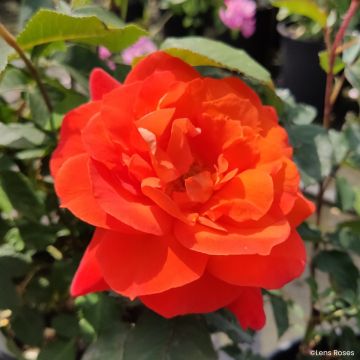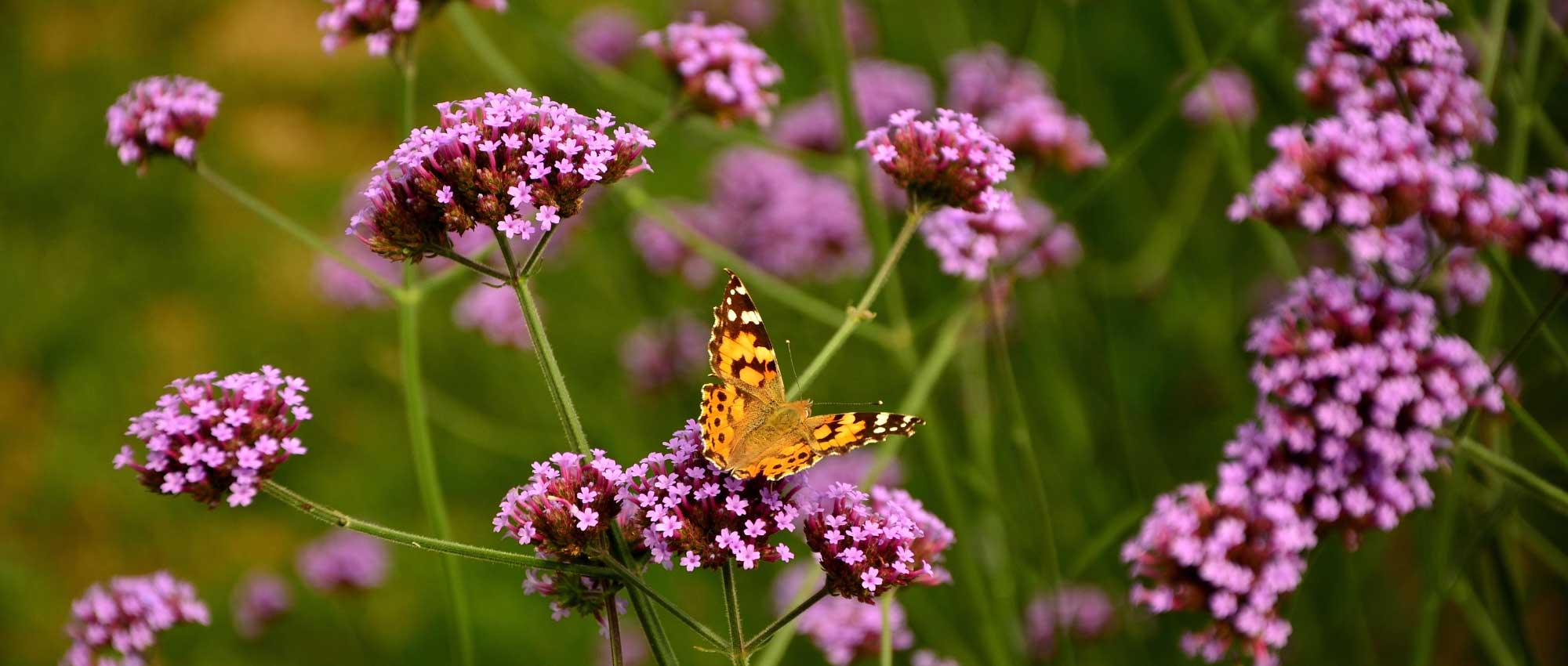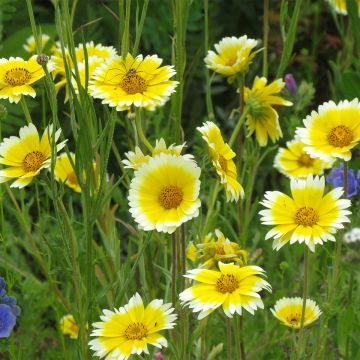

Garden verbena St George Seeds
Garden verbena St George Seeds
Verbena x hybrida St George
Florist's Verbena
Special offer!
Receive a €20 voucher for any order over €90 (excluding delivery costs, credit notes, and plastic-free options)!
1- Add your favorite plants to your cart.
2- Once you have reached €90, confirm your order (you can even choose the delivery date!).
3- As soon as your order is shipped, you will receive an email containing your voucher code, valid for 3 months (90 days).
Your voucher is unique and can only be used once, for any order with a minimum value of €20, excluding delivery costs.
Can be combined with other current offers, non-divisible and non-refundable.
Why not try an alternative variety in stock?
View all →This plant carries a 6 months recovery warranty
More information
We guarantee the quality of our plants for a full growing cycle, and will replace at our expense any plant that fails to recover under normal climatic and planting conditions.
Would this plant suit my garden?
Set up your Plantfit profile →
Description
Garden verbena St George is undoubtedly one of the best performing varieties: it is very resistant and blooms continuously from late spring to early autumn with stunning scarlet flowers with contrasting pure white eyes. Remarkable in beds and containers.
Highly appreciated for their abundant, lengthy flowering and their bright colours, Garden Verbena, also known as Verbena hortensis, are half-hardy perennials. This disadvantage is easily outweighed by the fact that they are very easy to grow and that they flower non-stop from June to September. They are versatile plants that can be placed in borders, beds or even in containers.
Derived from the prestigious collection of the Royal Botanic Gardens at Kew (United Kingdom), garden verbena 'St George' has a compact growth habit, attaining a height of 20 cm and a width of 40 cm. It is also exceptionally mildew resistant! You can easily combine it with Petunias or even Flowering Tobacco, in beds or in containers.
Originating from South America and belonging to the family Verbenaceae, Verbena x hybrida is, as its name suggests, the result of hybridization. It produces finely cut whorls of flowers that are arranged in umbels, forming small, flat bouquets measuring 6 to 8 cm in width, the colours of which vary from one variety to the next. Its leaves are finely cut, sometimes lobed and display a beautiful medium green colour. It is a nectar-rich plant that butterflies are particularly fond of.
Garden verbena thrives in the sun in rich, well-drained soil. When planted in flower boxes, care must be taken to not add too much nitrogenous fertilizer since it can induce excessive leaf growth at the expense of flower development.
Easy to grow, garden verbena can occasionally be prone to fungal diseases (downy and powdery mildew) which can be easily avoided by not placing it in a sheltered area where the air does not circulate much and by taking care to not wet its foliage when watering. Watch out for possible attacks by red spider mites, thrips and slugs. To encourage repeat blooming, remember to remove faded flowers regularly. Little efforts will be richly rewarded!
Flowering
Foliage
Plant habit
Botanical data
Verbena
x hybrida
St George
Verbenaceae
Florist's Verbena
Cultivar or hybrid
Other Thompson and Morgan seeds
View all →Planting and care
Sow from February to April, in a tray or directly in pots filled with a moistened, good quality seed starting mix. Do not cover the seeds. Place the container somewhere bright and warm, maintaining a temperature between 24 and 27 °C. Germination usually occurs after 14 to 21 days. When the seedlings are large enough, transplant them into small pots and gradually acclimatize the young plants to outdoor conditions for a few weeks before planting them out in the garden, 45 cm apart, after all risk of frosts have passed.
Sowing period
Intended location
Planting & care advice
This item has not been reviewed yet - be the first to leave a review about it.
Haven't found what you were looking for?
Hardiness is the lowest winter temperature a plant can endure without suffering serious damage or even dying. However, hardiness is affected by location (a sheltered area, such as a patio), protection (winter cover) and soil type (hardiness is improved by well-drained soil).

Photo Sharing Terms & Conditions
In order to encourage gardeners to interact and share their experiences, Promesse de fleurs offers various media enabling content to be uploaded onto its Site - in particular via the ‘Photo sharing’ module.
The User agrees to refrain from:
- Posting any content that is illegal, prejudicial, insulting, racist, inciteful to hatred, revisionist, contrary to public decency, that infringes on privacy or on the privacy rights of third parties, in particular the publicity rights of persons and goods, intellectual property rights, or the right to privacy.
- Submitting content on behalf of a third party;
- Impersonate the identity of a third party and/or publish any personal information about a third party;
In general, the User undertakes to refrain from any unethical behaviour.
All Content (in particular text, comments, files, images, photos, videos, creative works, etc.), which may be subject to property or intellectual property rights, image or other private rights, shall remain the property of the User, subject to the limited rights granted by the terms of the licence granted by Promesse de fleurs as stated below. Users are at liberty to publish or not to publish such Content on the Site, notably via the ‘Photo Sharing’ facility, and accept that this Content shall be made public and freely accessible, notably on the Internet.
Users further acknowledge, undertake to have ,and guarantee that they hold all necessary rights and permissions to publish such material on the Site, in particular with regard to the legislation in force pertaining to any privacy, property, intellectual property, image, or contractual rights, or rights of any other nature. By publishing such Content on the Site, Users acknowledge accepting full liability as publishers of the Content within the meaning of the law, and grant Promesse de fleurs, free of charge, an inclusive, worldwide licence for the said Content for the entire duration of its publication, including all reproduction, representation, up/downloading, displaying, performing, transmission, and storage rights.
Users also grant permission for their name to be linked to the Content and accept that this link may not always be made available.
By engaging in posting material, Users consent to their Content becoming automatically accessible on the Internet, in particular on other sites and/or blogs and/or web pages of the Promesse de fleurs site, including in particular social pages and the Promesse de fleurs catalogue.
Users may secure the removal of entrusted content free of charge by issuing a simple request via our contact form.
The flowering period indicated on our website applies to countries and regions located in USDA zone 8 (France, the United Kingdom, Ireland, the Netherlands, etc.)
It will vary according to where you live:
- In zones 9 to 10 (Italy, Spain, Greece, etc.), flowering will occur about 2 to 4 weeks earlier.
- In zones 6 to 7 (Germany, Poland, Slovenia, and lower mountainous regions), flowering will be delayed by 2 to 3 weeks.
- In zone 5 (Central Europe, Scandinavia), blooming will be delayed by 3 to 5 weeks.
In temperate climates, pruning of spring-flowering shrubs (forsythia, spireas, etc.) should be done just after flowering.
Pruning of summer-flowering shrubs (Indian Lilac, Perovskia, etc.) can be done in winter or spring.
In cold regions as well as with frost-sensitive plants, avoid pruning too early when severe frosts may still occur.
The planting period indicated on our website applies to countries and regions located in USDA zone 8 (France, United Kingdom, Ireland, Netherlands).
It will vary according to where you live:
- In Mediterranean zones (Marseille, Madrid, Milan, etc.), autumn and winter are the best planting periods.
- In continental zones (Strasbourg, Munich, Vienna, etc.), delay planting by 2 to 3 weeks in spring and bring it forward by 2 to 4 weeks in autumn.
- In mountainous regions (the Alps, Pyrenees, Carpathians, etc.), it is best to plant in late spring (May-June) or late summer (August-September).
The harvesting period indicated on our website applies to countries and regions in USDA zone 8 (France, England, Ireland, the Netherlands).
In colder areas (Scandinavia, Poland, Austria...) fruit and vegetable harvests are likely to be delayed by 3-4 weeks.
In warmer areas (Italy, Spain, Greece, etc.), harvesting will probably take place earlier, depending on weather conditions.
The sowing periods indicated on our website apply to countries and regions within USDA Zone 8 (France, UK, Ireland, Netherlands).
In colder areas (Scandinavia, Poland, Austria...), delay any outdoor sowing by 3-4 weeks, or sow under glass.
In warmer climes (Italy, Spain, Greece, etc.), bring outdoor sowing forward by a few weeks.






























































